WARNING - This page is NOT intended to tell you how to make high voltage
wires safe. It is intended only to show you how I do high voltage wiring
to prevent losses along the wire path from the power supply to the
final destination. These techniques have not been used by me above 75kV.
Working with high voltages is extremely dangerous. Use this information
at your own risk.
Use insulated wire
Bare wire (e.g. bare copper wire), if it is at high voltage with respect
to ground, will leak electrons. Electrons from the wire will attach
themselves to molecules in the surrounding air, ionizing the air.
This means you will have a lower voltage at your destination than
you could otherwise have. This is the reason for using insulated wire
instead. You'll have less leakage.
How much insulation you need depends on how high the voltage. For
voltages such as I work with, 10kV and higher, you should use special
high voltage wire. That's not to say you shouldn't use it for lower
voltages too. In fact you probably should. I just don't know what
the lower range is where you should start worrying about it.
This wire has plastic around it along with a layer of other wire
insulation. If you've ever looked at the wire leading
into the back of a CRT (cathode ray tube) in a TV or computer monitor
then you've seen a high voltage wire.
I don't use high voltage wire because I don't have a ready supply of
it.
I use what I call multimeter wire, though it seems to be thicker than
the wire used with my multimeters. The conductive wire itself seems to be
about 18 AWG and is stranded. With the insulation the outer diameter is
about 1/8" or 3.5mm. I buy it from a good local electronics store and
they cut it to whatever length I want.
My multimeter wire.
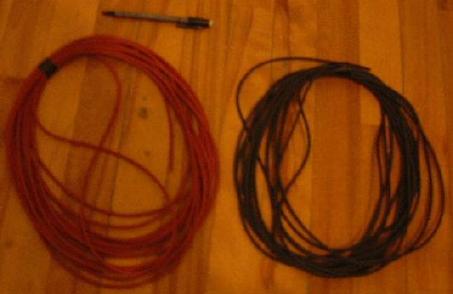 |
|
I've seen some experimenters use much less insulation but they usually
work around 30kV whereas I'm typically as high as 50kV.
Note once again - This insulation is to reduce leakage. It does not
mean you can go near the wire yourself. Doing so will result in a shock,
possibly leathal.
Custom insulated connectors
Where two wires join is another place where leakage/losses can happen.
The ends of wire, especially standed wire, have sharp points. Twisting
them together doesn't do the job since the sharp points will still be there.
Some high voltage researchers go
as far as to submerge the connection in a container of insulating oil
(e.g. mineral oil available at drug stores). Wax (available in some
grocery stores and for making candles in craft stores) is also a good
insulator. I've heated wax on a stove to make it liquid and then
poured this into a container that had my connection in it. When the
wax hardens (usually give it 24 hours if it's paraffin wax) you have a
well insulated connection. These techniques are especially necessary for
higher voltages, maybe above 75kV.
Most of the time though, I make a custom plug and use a butt connector
as the following pictures show. It works very well for preventing
leakage up to 75kV (the highest I've measured doing as of this writing).
I first trim and twist the end of my wire about
6mm or 1/4". I also cut a piece of copper tubing (available at
hobby stores) to the same length. Use tubing that slides easily
over your wire. Mine has an inner diameter of about 1.5mm or 3/32".
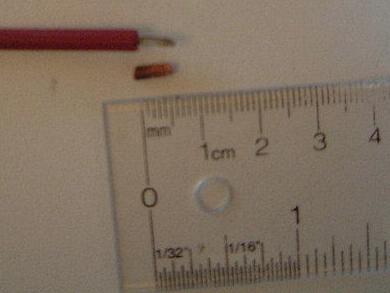 |
|
I then put solder on the wire and put the tube
on part way. I then add more solder to the part of the wire still exposed
and then use the tip of my soldering gun to push the tube on the rest of
the way. This firmly attaches the two.
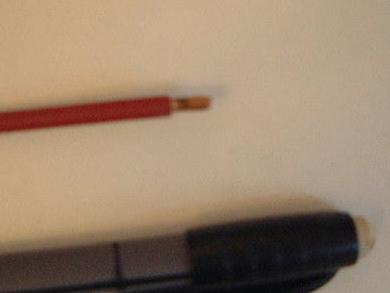 |
|
I next cut about 55mm of black electrical tape...
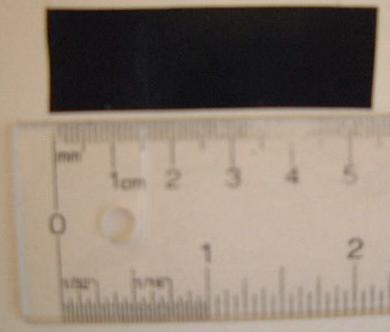 |
|
... and wrap it onto the insulated part of the
wire beside the uninsulated end. The reason for the tape is that it
will be pushed into the butt connector. If the tape weren't there
then there would be an uninsulated air gap inside the connector.
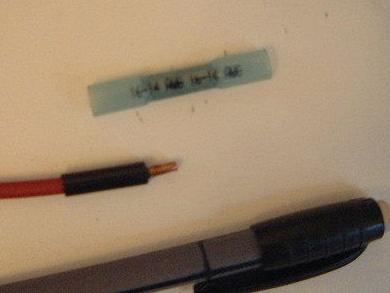 |
|
Here is the end result - two wires connected
together in a well insulated manner.
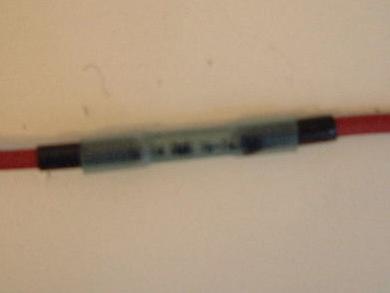 |
|
The package the butt connector comes in. The part
number is 20-6934-4 but you'll likely improvise all of this and find
whatever you can get locally. These I get in the automotive section
at Canadian Tire.
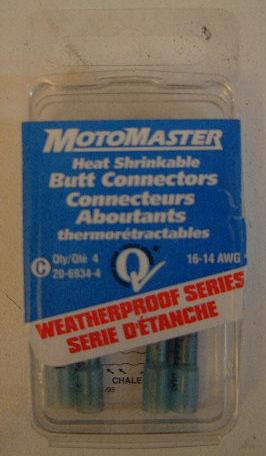 |
|
An example of these connections in use.
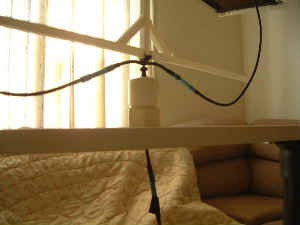 |
|
Staying away from ground
Saying that a wire has a high voltage on it means that its voltage
is numerically far from the voltage of the planet Earth. Your
house, floors, table, ceiling, and YOU all are connected to Earth and have
a voltage on them that is numerically close to that of the Earth.
If your voltage is far from Earth, it can still be far from the voltage
on your wire (it's not unusual for a person to be at 10,000 volts
but if your wire is at 30,000 volts then you're still 20,000 volts
from your wire!)
So if you have a wire that has 30kV with respect to ground that
means there is a difference of 30,000 volts between your surroundings
and that wire. That difference means that electrons from that
wire have a very strong desire (30,000 volts of desire) to jump from
that wire to your surroundings and you.
So if you have an insulated wire sitting on a table (whose voltage is
near ground) then there will be more electrons leaking through that
insulation than if that wire were hanging in the air. To suspend my
wires in the air I use plastic pill bottles. Glass jars are also
good. These are all insulators so the electrons have less of an
ability to go into them.
Here are some examples that I've done in the past.
You can see the pill bottles taped to the side
of the table on the right. They have multimeter wire on them. The
wires going from the glass jars to the lifter (the triangular flying thing)
are bare wires because insulated wire would be too heavy.
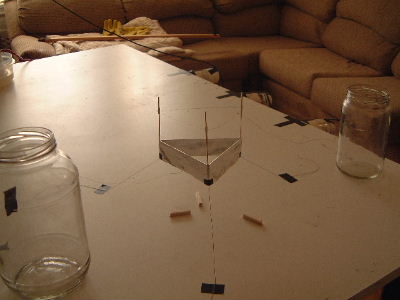 |
|
This shows the use of plastic at various places
(in this case various white plastic pieces). Wood is a semiconductor and
therefore not a great insulator. The balsa wood in this picture is
part of a frame that has plastic joints and is sitting on a plastic
insulating plate (not shown).
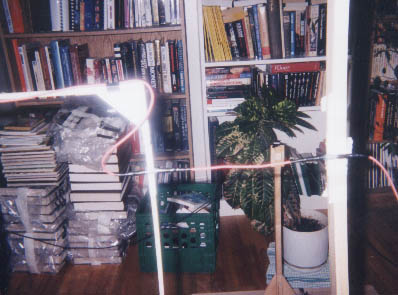 |
|
This one isn't an example of insulated wire but it
shows the use of pill bottles very well. In this case I'm making a
high voltage probe and testing the resistors. I've zigzagged them to
save space.
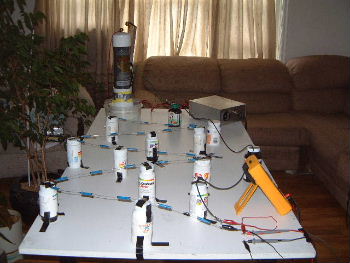 |
|
WARNING - This page is NOT intended to tell you how to make high voltage
wires safe. It is intended only to show you how I do high voltage wiring
to prevent losses along the wire path from the power supply to the
final destination. These techniques have not been used by me above 75kV.
Working with high voltages is extremely dangerous. Use this information
at your own risk.










